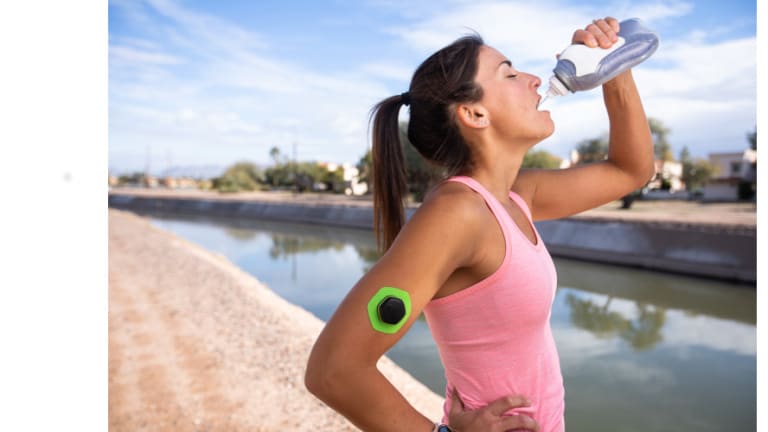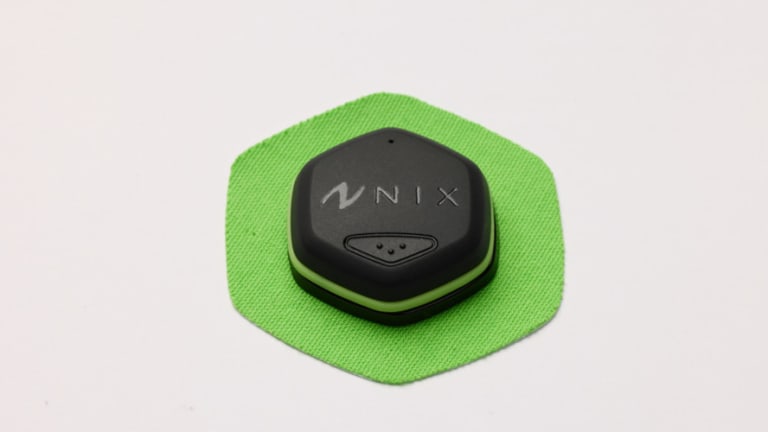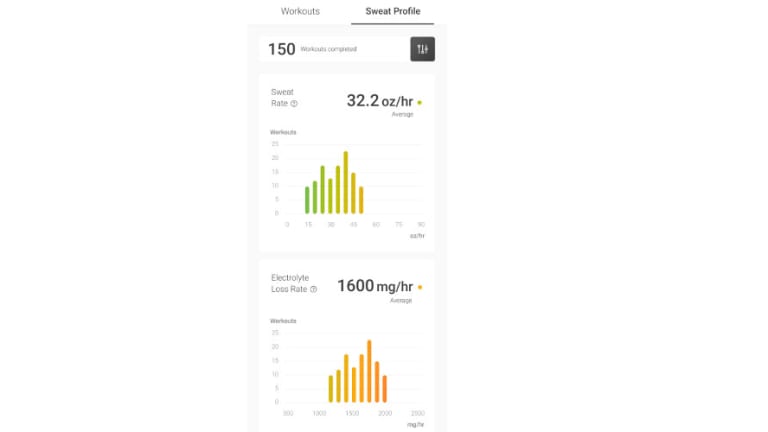Athletes always need to be conscientious of their hydration, and those playing endurance sports like tennis require even more attention to this detail. As little as a 2.5% loss of bodyweight through fluid loss, which may not produce any noticeable symptoms of dehydration, can cause a significant decrease in performance during high-intensity exercise, as well as lead to muscle fatigue. Sweat rates and electrolyte loss can vary greatly depending on the individual and playing conditions, which makes a one-size-fits-all approach to hydration an imperfect solution.
That’s where the Nix Biosensor can help. Dubbed a “portable hydration lab” by the brand, it continuously measures sweat and electrolyte loss in real time as you exercise. It streams this data to the accompanying app on your smartphone while you’re in action. Not only does it analyze and store the information, but the app can be set up to notify you when to consume fluids at certain intervals to stay hydrated.
The sensor is designed to be worn on the outside of the biceps. It's virtually weightless and stays attached with a latex-free patch that sticks on like KT Tape. The pod twists into the patch and sits around the cuff line of a short sleeve shirt. During numerous court sessions I incurred no security issues or any noticeable intrusion when playing. The only time the patch showed any peeling was after getting jostled during a pick-up hoops game. When not in use, the pod sits in a charging case.


